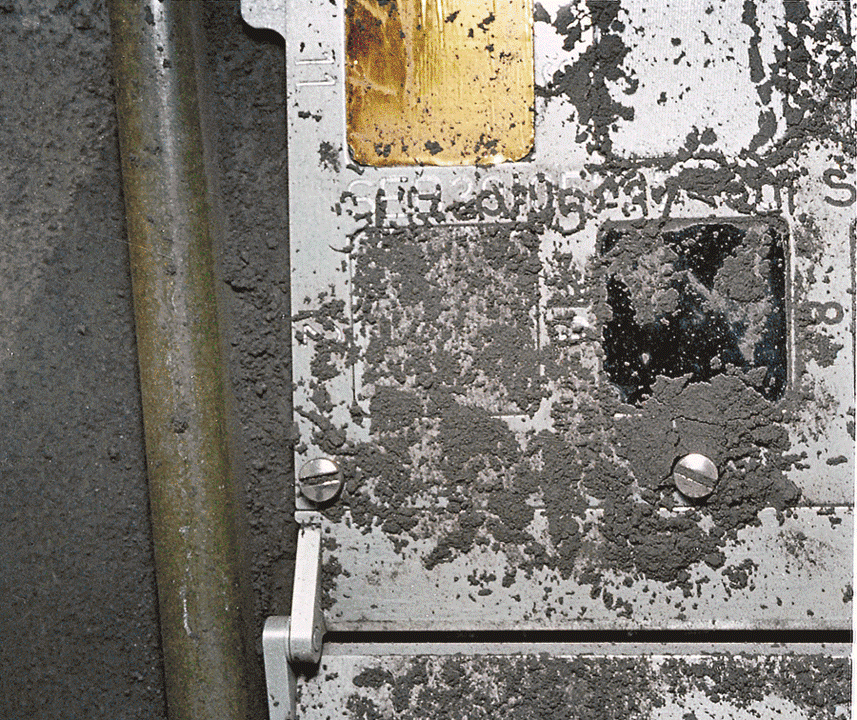The Cohesiveness of Lunar Dust
Thermal Degradation Samples experiment, with the "Magic Numbers" consisting of dust on the Moon. This animated .Gif file shows the cohesive nature of lunar dust.
Alan Shepard picked up some dust, splashed it on two aluminium plates each of which had Identification numbers stamped, indented into each plate, and each of which had 12 identical stamp-sized samples of different materials such as white paint, teflon, etc to test how much dust stuck to it.
Alan took 7 photos in all, one of them after he had splashed dust on the second plate, then bumped it. Lunar dust had been accumulated in the indented numbers during splashing, and had become molded into the indented numbers.
After the bump, the indented "Magic Numbers" were dislocated, jumping about 3 mm with varying results.
This discovery was reported by Tommy Gold in NASA Apollo 14 Preliminary Science Report in 1971, but then forgotten.
It was unknown and unreferenced for 40 years until O'Brien announced it with a photo-shopped image to make it clear at his second 21st century lunar science conference at Boulder in December 2010. He then published it in his review (see link to O'Brien PSS 2011 Review).
Cohesive forces revealed by this discovery are suggested by O'Brien's sunrise model to be essential in explaining movements of dust on the Moon, including why the surface is naturally smooth even after large crater impacts (see link O'Brien & Hollick Sunrise,PSS 2015).
These cohesive forces went unreferenced in extensive hypothetical models and experiments based on notions of fine dust levitated by large electric fields on the Moon (seelink O'Brien, Paradigm etc 2018).
Jim Gaier completed the TDS experiment in 2012, and gives more details. (See Gaier Icarus see link http://dx.doi.org/10.1016/j.icarus.2012.07.002 ).
